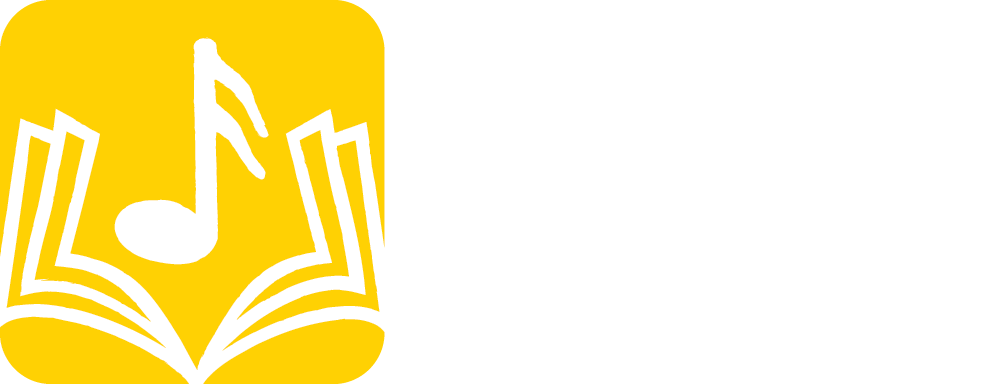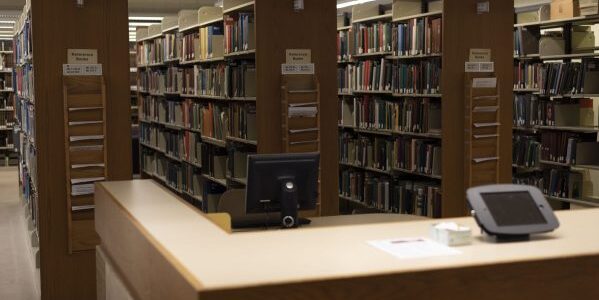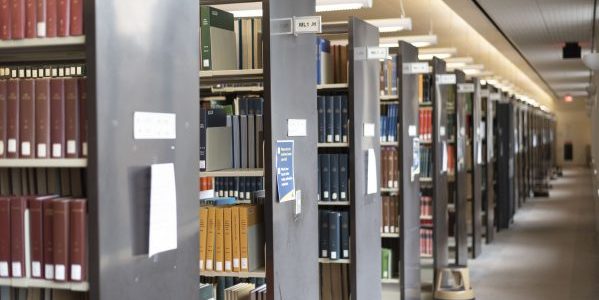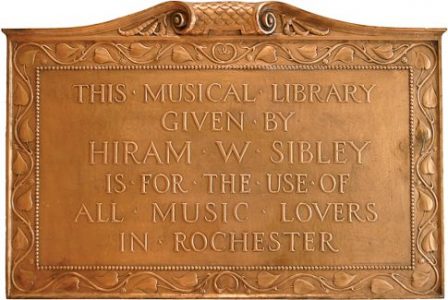Facility
- Dedicated in 1989
- Architect: Macon & Chaintreuil Associates
- 45,000 square feet on 3 floors; seating for 200
- Features: open and closed stack areas; 2 seminar rooms; conservation laboratory (the only such facility in the world housed in a music library) ; Ruth T. Watanabe Special Collections, including the Eastman School Archives, the Eastman Audio Archive, and vault
Collection Information
- Approximately 375,000 cataloged books and scores
- Subscriptions to more than 300 music periodicals
- A recorded sound collection of more than 100,000 LPs, CDs, and tapes, including the Eastman Audio Archive
- A world-class Special Collections Department containing manuscripts, first and early editions of scores and treatises, iconographic material, and letters
- Public Domain Score downloads in UR Research: nearly 12 million
- Website pageviews: 83,714 (Calendar year 2020)
Personnel
- 9 Librarians (director, acquisitions, cataloging (3), public services (2), conservator, special collections)
- 1 Professional Staff (library technology)
- 8 FTE Support Staff
- Approximately 50 student assistants
Music Library Technology
- Wi-Fi throughout the building
- CD players
- Audiocassette players
- Turntables
- VHS players
- DVD players
- Laserdisc player
- Blu-ray player
- 3 Xerox copy machines
- Scanners ( sheet feed, flatbed)
- Microform readers
- Microfiche/card reader
- Microfilm ScanPro 3000
Ruth T. Watanabe Special Collections
The Ruth T. Watanabe Special Collections include scores, books, and journals, as well as manuscripts, sheet music, and various archival collections. Notable items or collections include:
- 11th-century Reichenau/Rochester Codex, and the 12th-century Admont/Rochester Codex (MS 494) both containing significant theoretical treatises by Aribo, Guido of Arezzo, and others.
- Oskar Fleischer collection of manuscripts illustrating musical notation from the 10th to the 16th centuries.
- Petrucci’s printing of Josquin’s Masses, and a number of Palestrina’s sacred works printed by Gardane.
- Orlando di Lasso’s complete Magnum opus musicum (1604) .
- Nearly 60 letters in the hand of Berlioz, forming a special collection within a large collection of musical correspondence. Catalogued in the Letter File database.
- Rare Wagner scores, including the publication of Tannhauser lithographed by the composer.
- Holographs by American composers Aaron Copland, David Diamond, Roy Harris, Alan Hovhaness, Gardner Read, Bernard Rogers, Leo Sowerby, Virgil Thomson, and of course, Howard Hanson.
- Library of the critic Arthur Pougin (1834-1921), some 3,000 volumes on French theater and opera including rare almanacs, and writings of Guerre des Bouffons.
- Henry Krehbiel’s library of several hundred books on folklore and folk song anthologies, and the oil portrait of Mozart by Johann Heinrich Tischbein.
- Performing editions from the extensive libraries of violinist Jacques Gordon and composer/pianist Ferruccio Busoni.
- Oscar Sonneck’s working library, including preliminary materials relating to his development of the Library of Congress classification for music in 1904.
- Sheet music collections numbering some 80,000 pieces.
- A comprehensive collection of editions of “Home Sweet Home,” occasioned by the autograph score of Sir Henry Bishops Clari, or the Maid of Milan containing this air.
- Publishers’ collections including the rental stock (mainly operas) of Schott-Freres (Brussels) and the last copies forming the Archives of Carl Fischer, and first editions of composers Friedrich Kuhlau and Carl Nielsen amassed for their thematic catalogs issued by Dan Fog (Copenhagen).
Sibley Music Library Timeline
1904
Hiram Watson Sibley (1845-1932) founds the Sibley Music Library
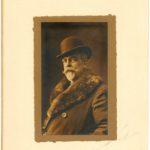
1922
The holdings are transferred to the Eastman School of Music
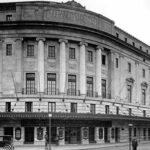
1922
Barbara Duncan comes to Eastman from the Boston Public Library
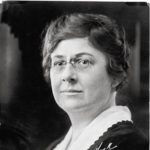
1937
The first separate building in the country to house a music library is erected on Swan Street
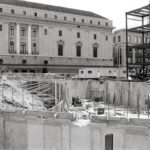
1947
Ruth T. Watanabe’s era starts at Sibley
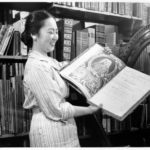
1984
Mary Wallace Davidson designs the third-and current-home of the Sibley Music Library
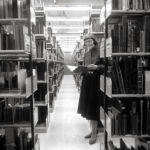
1989
The Sibley Music Library is moved to its present location
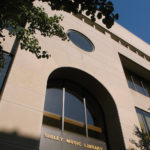
2000
Dan Zager’s era starts at Sibley

2021
Jonathan Sauceda begins at Sibley

